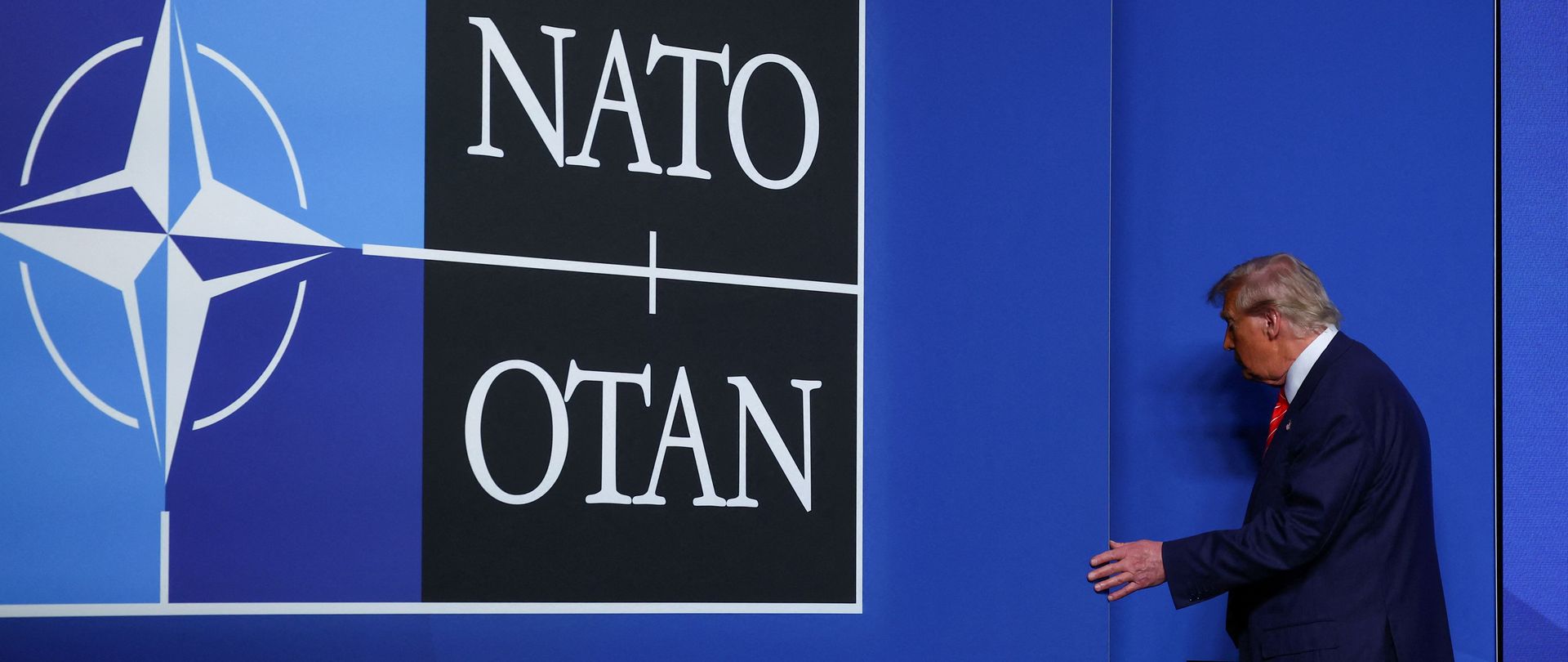
US President Donald Trump leaves the stage at the NATO summit in The Hague.
© picture alliance / REUTERS | Yves Herman
Foreign and Security Policy
Trump’s foreign and security policy has become increasingly unpredictable. Trump is raising doubts about alliances and partners in Asia and Europe, and he is more or less openly casting doubt on US military support and security guarantees. Uncertainty is growing, particularly among partners such as Ukraine and Taiwan, which are heavily dependent on American military support. At the same time, Trump has repeatedly raised expectations about his abilities to resolve conflicts with antagonistic regimes such as Russia and China, but also Iran and North Korea. He continues to make provocative statements about US territorial ambitions in Canada, Greenland, Panama, and Gaza.
The foreign policy elites of both parties continue to see the rise of China as a key strategic challenge – a perception reflected in Trump’s trade war with the country. However, it is unclear whether, and under what conditions, Trump would be prepared to de-escalate relations with China. In the Middle East, the Trump administration is unconditionally on Israel’s side. The military strikes against the Houthis and Trump’s decision to bomb Iran’s nuclear facilities show that this administration has not completely renounced the use of military means in the region either. Trump relies on close economic relations with the Gulf states without preconditions. Relations with Iran remain the linchpin of US Middle East policy, as underlined by the intervention in the war on the side of Israel.
Publications
-
A world in crisis: Can Europe cope without the US?
Interview von Marco Overhaus, in: Deutsche Welle, 10.10.2024 -
Europe and the End of Pax Americana
Transatlantic Relations Must Be Put on a New Footing, Regardless of Who Wins the US Elections
SWP Comment 2024/C 45, 02.10.2024, 7 Pagesdoi:10.18449/2024C45
-
The Biden Administration’s Global Posture Review
Washington Seeks to Expand US Military Presence in Indo-Pacific without Neglecting Europe
SWP Comment 2021/C 59, 20.12.2021, 5 Pagesdoi:10.18449/2021C59
-
European Strategic Autonomy: The Test Case of Iran
in: European Review of International Studies, 13.12.2021, Band 8: Ausgabe 3, S. 443–477 -
War everywhere? Why the crisis on the Polish-Belarusian border is not a hybrid attack
The crisis on the Polish-Belarusian border brought about by the regime of Alexander Lukashenko is an attempt to use the suffering of refugees to exert political pressure on the EU and divide it. But this is by no means hybrid warfare, says Marco Overhaus.
Point of View, 19.11.2021 -
International Sanctions: Improving Implementation through Better Interface Management
Research Division International Security and the Americas Division, WP Nr. 01, August 2021, 101 Pagesdoi:10.18449/2021WP08